5 patio painting mistakes to avoid – swerve patchy, peeling finishes with these expert tips
Surface preparation is key, experts urge
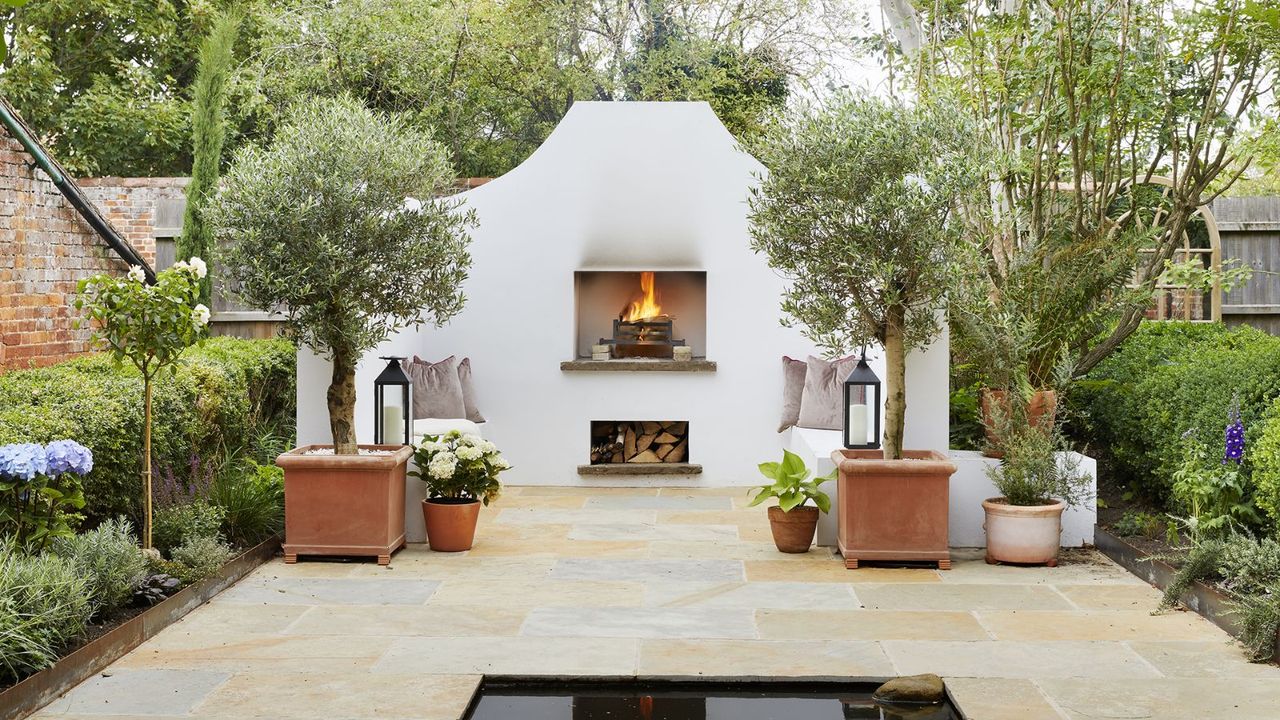

Even the very smallest of patio painting mistakes can completely disrupt the look and feel of your yard, which is why it's so important to get it right when sprucing up your outdoor space.
From applying paint too thickly on pavers to using the wrong products entirely, painting experts stress the importance of prepping the area before getting started.
Here, they share the five mistakes to avoid when painting a concrete patio, and tips for a luxe finish.
5 patio painting mistakes
1. Ignoring surface prep

The most important step when it comes to patio painting is prepping your space correctly.
For painted patio ideas, Carr Lanphier, CEO at Improovy, stresses, 'Properly cleaning and preparing your surface is going to be paramount.
'I do see this mistake pretty frequently, where an enterprising DIYer will paint their patio without preparing their surfaces, and end up with a patchy paint job that peels after just a few months.'
As an outdoor area, it's obvious that you can expect lots more dirt and general grime than indoors, so Carr recommends pressure washing your patio with a low setting to clean just about everything, including walls, decking, railings, and trim.
'If you don't have access to one, you can always just use a sponge, some gentle dish soap, and some elbow grease,' he adds. The Palmolive Ultra Pure + Clear Liquid Dish Soap available at Walmart is ideal for this, with a 100% biodegradable formula that's free of phosphates and parabens.
You should also take the time to get rid of moss on your patio, as well as any mold, which is one of the things people with clean patios always do.
Erik Harris, franchise owner and general manager of CertaPro Painters of Needham, MA, explains, 'Patios are notorious for collecting more mildew and dirt due to their proximity to the ground and the presence of moisture.
'A good power wash with an enzyme solution/bleach added to remove all this is critical to ensuring a good bond between the paint/stain and the substrate.'
This should also help to remove any old grease or flaking paint, which may prevent the paint from adhering properly. As Anthony Kulikowski, owner of Five Star Painting in South Bend, IN, a Neighborly company, adds, 'Proper cleaning, scraping, and sanding are essential.'
2. Not using the right products

Crake sure you do your product research before getting started.
Whether you're a DIY expert or new to painting and decorating, Erik warns that often, skipping hiring a professional without researching enough can lead to products peeling on your patio, and the finish failing prematurely.
'Understanding the type of surface your patio is made of, or what was last applied to the surfaces, is critical,' he stresses. 'In general, wood decks typically require stains, whether oil-based or latex, whereas concrete patios can be either a porch enamel paint or concrete stain, depending on the previous coating and usage of the patio.
'I recommend wood decks get either the Woodluxe® Exterior Stain line available at Benjamin Moore, or the SuperDeck Exterior Waterborne Solid Color Deck Stain available at Sherwin-Williams.
'Concrete patios would be either the concrete enamel from one of those manufacturers or the INFUSION® REACTIVE CONCRETE STAIN available at H&C in higher-wear areas.'
As Anthony adds, most importantly, it's crucial to use a durable, weather-resistant made made specifically for patios to prolong the life of your paint job and prevent needing to fix peeling paint.
3. Applying paint too thickly

Stick to applying paint in thin, even layers.
One of the main reasons you may be left wondering 'Why is my deck paint peeling' is simply that the paint is applied far too thickly. The same, therefore, applies to your patio.
'Heavy coats can lead to drips, uneven drying, or cracking over time,' warns Anthony. 'Thin, even layers are much better.'
For this, we recommend using a high-quality paint roller, such as the Mister Rui Foam Paint Roller Kit available at Amazon, which features high density foam and a sturdy roller frame.
4. Painting in the wrong weather
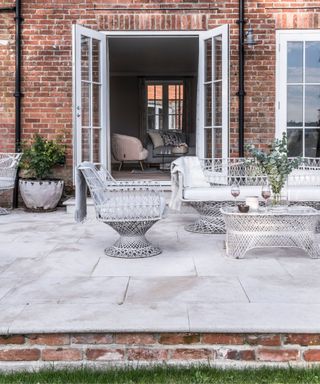
Wait for a dry and cloudy day for optimal painting conditions.
According to paint expert Erik, 'This is the single biggest mistake people make when painting a patio,' so it's imperative to get it right.
'They often read on the can that most exterior paint is suitable down to 35 degrees,' continues Erik. 'This is true, but patios take much longer to dry out early and late in the season.
'In New England, I personally don't start patio projects for approximately a month after we begin exterior work, and stop them a month before we conclude exterior work.
'The reason behind this is that you are asking for problems with the moisture content being too high and because the temperatures early and late in the season are not sustainable all day long. This represents a significant risk of premature failure.'
In particular, while indoors, you may be looking for ways to make paint dry faster; the opposite can usually be said outside. Pick too sunny a day and your paint will dry unevenly. On the other hand, pick a wet day, and your paint will appear streaky and discolored. For the best results, opt for a warm yet cloudy day and prepare to be patient.
The best time to paint a house exterior is in the spring and fall, so bear this in mind before embarking on your patio project.
5. Not allowing proper curing time
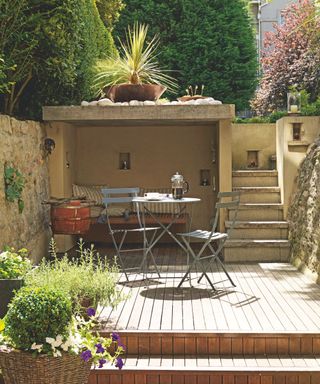
Ensure paint is thoroughly dry before touching it or replacing furniture.
Similarly, you must allow your new patio paint job to dry thoroughly before touching surfaces.
Paint expert Anthony warns, 'Walking on or placing furniture on the surface before it’s fully cured can damage the finish.'
For this reason, plan to stay away from your patio for at least 48 hours after painting, and keep in mind that thin coats applied with a roller or brushes, such as the ValueMax 7PC Paint Brushes Set available at Walmart, will, of course, dry quicker. The same applies if you're wondering on the best way to paint doors.
What to shop
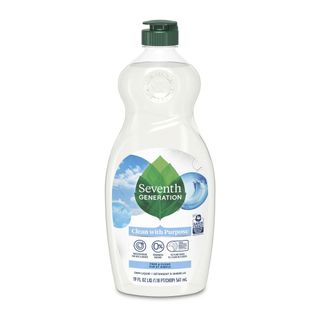
This liquid dish soap has no dyes or fragrances, and is both a EPA Safer Choice Certified and USDA Certified Biobased product, perfect for cleaning walls and surfaces without the risk of damage or discoloration.
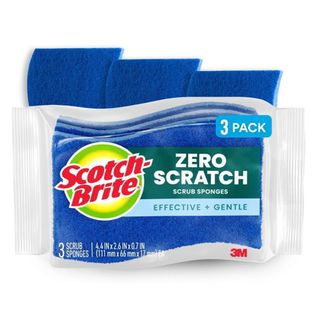
These scrubbing brushes are both effective yet gentle, useful for removing dirt and grime without scratching delicate surfaces like wood, concrete and metal.
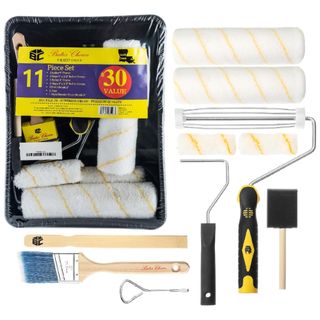
This professional quality painting set is affordable and effective, making it easy to get the job done quickly with a superior finish
Meet our experts

Carr is the CEO of Improovy, a Chicago-based painting company that believes as we evolve, the way we manage home renovation projects should too.

After graduating in 2008, Erik worked for paint company Sherwin-Williams for five years, gaining valuable knowledge about the paint industry and proper painting procedures.
He has since been part of the team at Needham Certapro since 2013, which he acquired in 2020, taking the company to new heights over the last 12 years.

Anthony has been a painter since high school, working as a contractor just before opening Five Star Painting, a Neighborly company, in 2017.
FAQs
Can you paint over old patio paint?
While you can paint over old paint, particularly if you just need to touch up paint on walls, but you must take suitable steps beforehand to ensure a long-lasting, durable finish. Most importantly, these will include prepping and cleaning the surface thoroughly before getting started.
Do I need to prime my patio before painting?
Contrary to popular belief, not all patio painting requires a primer. Check the manufacturer's instructions, and if one is required, make sure you know how many coats of primer you need, apply them thinly, and allow them to dry properly before painting over the top.
Along with avoiding any patio painting mistakes, getting clued up on the patio cleaning mistakes to avoid will make maintaining a welcoming outdoor space easy.
Sign up to the Homes & Gardens newsletter
Design expertise in your inbox – from inspiring decorating ideas and beautiful celebrity homes to practical gardening advice and shopping round-ups.

Ottilie joined Homes & Gardens last year, after finishing a Master's in Magazine Journalism at City, University of London. With previous contributions in Livingetc and Motorsport Magazine, she produces content for the Solved section on the website, focusing on clever tips and tricks to keep your home beautiful, organized and clean. She also has an undergraduate degree in English Literature and History of Art from the University of Edinburgh, where she developed a love for inspiring interiors and architecture.
You must confirm your public display name before commenting
Please logout and then login again, you will then be prompted to enter your display name.
-
 Are work tables the new, easier way to add a kitchen island? Interior designers claim they offer a more lived-in elegance that makes it worth losing the storage
Are work tables the new, easier way to add a kitchen island? Interior designers claim they offer a more lived-in elegance that makes it worth losing the storageFreestanding and full of character, the work table is 2025's most coveted kitchen feature
By Molly Malsom Published
-
 Hooked on the Fisherman Aesthetic? Here's how to style this unexpected trend with 12 coastal-inspired finds that don't go overboard
Hooked on the Fisherman Aesthetic? Here's how to style this unexpected trend with 12 coastal-inspired finds that don't go overboardPinterest predicted that the fishy look will be everywhere in 2025. Here’s how to get the look at home
By Charlotte Olby Published
-
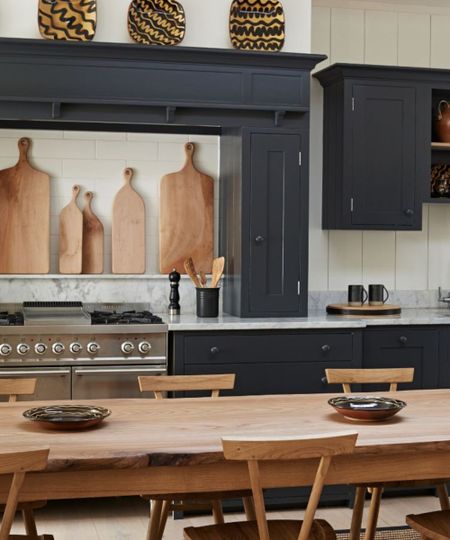 VOC paint vs non-VOC paint – what's the difference? Our experts weigh up the pros, cons and risks
VOC paint vs non-VOC paint – what's the difference? Our experts weigh up the pros, cons and risksAvoid dizziness, headaches and respiratory irritation by switching out toxic paints
By Ottilie Blackhall Published
-
 6 ways to prevent mold and damp in bedrooms – expert solutions to maintain a safe sleep environment
6 ways to prevent mold and damp in bedrooms – expert solutions to maintain a safe sleep environmentDon't sleep on these six tips, experts urge
By Seraphina Di Mizzurati Published
-
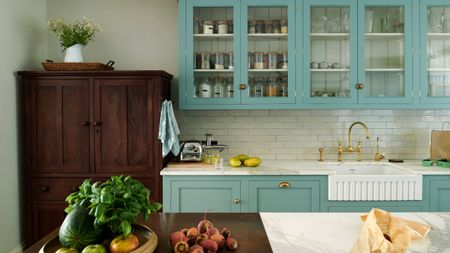 How to paint your tile backsplash for a professional finish – you can update yours on a budget
How to paint your tile backsplash for a professional finish – you can update yours on a budgetThese expert-approved tips will make it a breeze
By Ottilie Blackhall Published
-
 I tried the easy Reverse Advent Calendar decluttering method to clear out my home before Christmas – it's brilliant if overwhelm usually gets in your way
I tried the easy Reverse Advent Calendar decluttering method to clear out my home before Christmas – it's brilliant if overwhelm usually gets in your wayIt left my home feeling lighter with minimal effort
By Ciéra Cree Published
-
 I tried the one-in-one-out method to keep my space clutter-free and it changed my relationship with shopping for good
I tried the one-in-one-out method to keep my space clutter-free and it changed my relationship with shopping for goodI added a few caveats that made the rule work better for me
By Ciéra Cree Published
-
 8 things you should never store in a playroom and where to put them instead
8 things you should never store in a playroom and where to put them insteadRead our top tips on how to keep your playroom organized and fun at the same time
By Sophie Warren-Smith Published
-
 7 fall home maintenance tips experts never skip in their own properties
7 fall home maintenance tips experts never skip in their own propertiesSeven pro steps to maintain your home this fall
By Andy van Terheyden Published
-
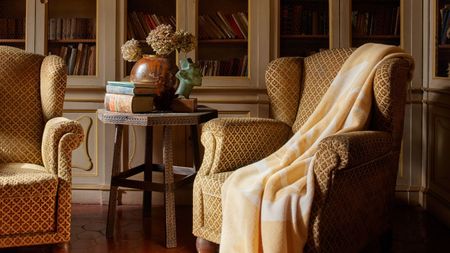 I’m in chronic pain and have used heating pads for 15 years to cope at home in cold weather – the best I've ever used is on sale for Amazon Prime's last day of deals
I’m in chronic pain and have used heating pads for 15 years to cope at home in cold weather – the best I've ever used is on sale for Amazon Prime's last day of dealsI've used more than 30 electric heating pads and they're my go-to for pain relief
By Punteha van Terheyden Published